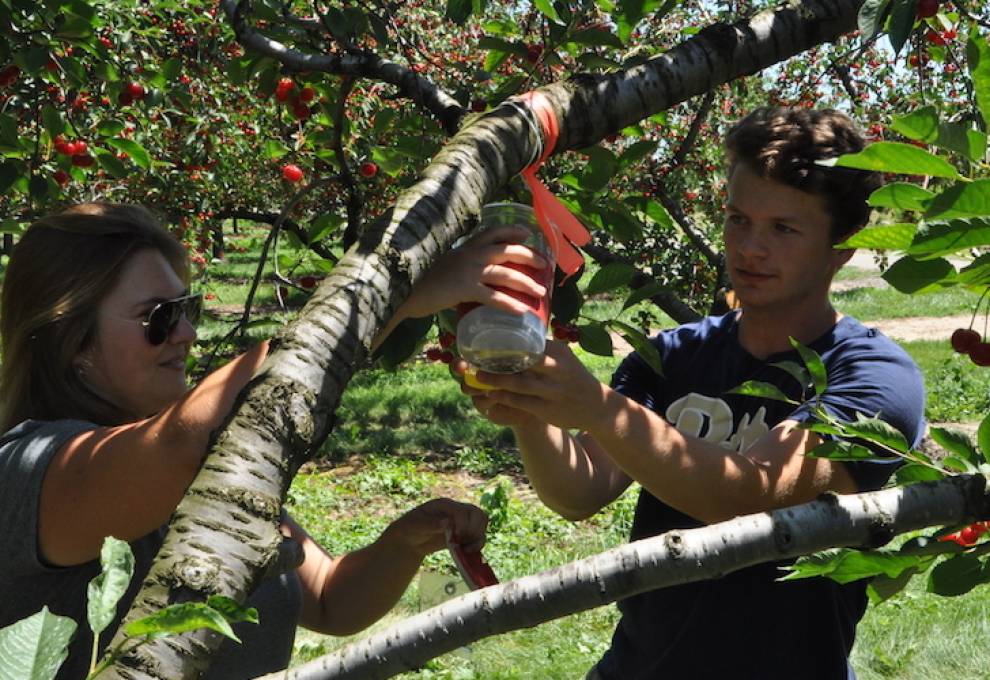
Spotted wing drosophila (SWD) monitoring continues in regions across Ontario. The Ontario Ministry of Agriculture, Food & Rural Affairs (OMAFRA) is doing this work in Essex, Chatham-Kent, Elgin, Norfolk, Niagara, Durham, Ottawa/Carleton, Dundas-Stormont and Glengary and Northumberland counties.
Area focus has been on regions where consultants were already working in berry and stone fruit crops so that retrieving trap contents were part of their regular route.
“We started off in strawberries and are gradually shifting some of the traps from berry crops to stone fruit and eventually grapes as they start to ripen,” says Dr. Dr. Wendy McFadden-Smith, OMAFRA Tender Fruit and Grape IPM Specialist.
The population was much slower to get going in 2018 than 2017, which McFadden-Smith notes was an exceptional year. Only a few SWD are being found per trap and none are being caught in half of the areas where she says they’re trapping this year.
Growers are well aware of the impact of SWD and are looking for damage; so far it’s not showing up even close to what it was last year.
“Most growers are working to use products in their pre-harvest sprays that will control SWD as well as other pre-harvest pests. In most years, (and this year) cherry harvest is well over before SWD numbers start to climb. Work in Michigan suggests that other stone fruit (plums and processing peaches were tested) that are still firm (4 psi) are not susceptible to oviposition. We will be exploring this in lab trials with key varieties of Ontario’s main varieties of apricots, plums, peaches and nectarines.”
According to McFadden-Smith, the number of areas monitored is limited as work is done to develop a Polymerase chain reaction (PCR) method to quantify SWD to eventually be offered as a for-fee service to growers.
“Berries are at risk once SWD has been identified and there is ripe fruit present. Growers must continue to manage the pest season-long and plan all year to use different management practices,” says Erica Pate, OMAFRA berry specialist.
The purpose of the field collections is more as a field validation of SWD numbers than an actual monitoring service.
“We are doing counts the old fashioned way with a microscope until the methodology is developed and then the samples will be tested with PCR to see if the same numbers come out the same. For now, growers can access the weekly reports at the ONFruit blog,” says McFadden-Smith. <https://onfruit.wordpress.com
Growers can also check the SWD product registrations on OMAFRA’s website by clicking here and previous ONFruit blog posts for information on products for managing pre-harvest insects including SWD on stone fruit.

Add new comment